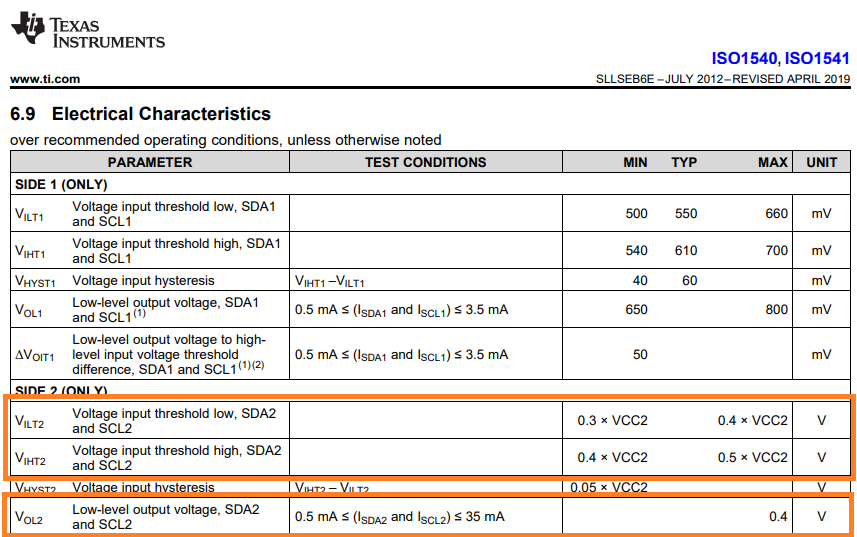Other Parts Discussed in Thread: ISO1640
Hi I have an I2C bus with multiple slaves. Some of the slaves are in different voltage/ground domains as the master, some are in the same domain. I'm wondering if I can put an ISO1540 in front of each node with Side 1 facing the node device and Side 2 facing the common bus (on which there will be multiple other ISO1540 devices with Side 2 facing out). An example is shown below.
This is not possible with other I2C buffers because the implementation of the bidirectionality relies on offsets from GND and VCC on both sides. From what I've read in the ISO1540 datasheet, the offset is only implemented on Side 1 and it appears that it would be ok to hook Side 2 up to the Side 2 of another ISO1540. Is this do-able?
Thanks,
Will



